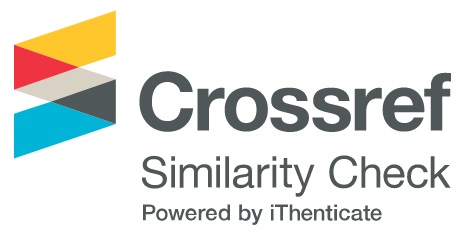Don't Put All Your Eggs in Foreign Baskets
DOI:
https://doi.org/10.24215/18521649e016Keywords:
Macroeconomics, International Trade, Sudden StopsAbstract
I analyze the sluggish response of exports during and after financial crises using firm level data for two countries-episodes: Argentina 2001 and Peru 1998 crises. I find that both incumbent exporting firms do not expand and that there’s no significant entry of new exporting firms. Furthermore, I present evidence that suggests that the export elasticity to the real exchange rate is asymmetric, smaller for depreciations than for appreciations. I build and estimate a DSGE model for a small open economy where exporting entrepreneurs are subject to financial frictions and balance sheet effects in order to try and explain these stylized facts. Although these frictions decrease the response of exports to movements in the exchange rate, I use computational exercises to show that they are not enough to explain the empirical results.
Downloads
Metrics
References
Albornoz F., Calvo Pardo H. F., Corcos G., and Ornelas E. (2012). Sequential exporting. Journal of International Economics, 88(1), 17–31.
Albuquerque R., Eichenbaum M., Luo V. X., and Rebelo S. (2016). Valuation risk and asset pricing. The Journal of Finance, 71(6), 2861–2904.
Alessandria G., Pratap S., and Yue V. Z. (2013). Export dynamics in large devaluations. Working Paper.
Berman N., Martin P., and Mayer T. (2012). How do different exporters react to exchange rate changes?. The Quarterly Journal of Economics, 127(1), 437–492.
Cavallo E., Powell A., Pedemonte M., and Tavella P. (2015). A new taxonomy of sudden stops: Which sudden stops should countries be most concerned about? Journal of International Money and Finance, 5, 47–70.
Chatterjee A., Dix-Carneiro R., and Vichyanond J. (2013). Multi-product firms and exchange rate fluctuations. American Economic Journal: Economic Policy, 5(2),77–110.
Coremberg A. A. (2007). La medición de la productividad y los factores productivos. PhD thesis, Universidad Nacional de La Plata.
Coremberg A. A. (2009). Midiendo las fuentes del crecimiento en una economía inestable: Argentina. Productividad y factores productivos por sector de actividad económica y por tipo de activo. CEPAL.
Eaton J., Eslava M., Kugler M., and Tybout J. (2008). The margins of entry into export markets: evidence from Colombia.
Fernandes A. M., Freund C., and Pierola M. D. (2016). Exporter behavior, country size and stage of development: Evidence from the exporter dynamics database. Journal of Development Economics, 119(1), 121–137.
Garcia Cicco, J., Heresi, R., and Naudon, A. (2012). The real effects of global risk shocks in small open economies. mimeograph, LACEA.
Garcia-Cicco J., Pancrazi R., and Uribe M. (2010). Real business cycles in emerging countries?. American Economic Review, 100(5), 2510–31.
Gopinath G. and Neiman B. (2014). Trade adjustment and productivity in large crises. American Economic Review, 104(3), 793–831.
Jordà O. (2005). Estimation and inference of impulse responses by local projections. American economic review, 95(1), 161–182.
Kiyotaki N. and Moore J. (1997). Credit cycles. Journal of political economy, 105(2), 211–248.
Kohn D., Leibovici F., and Szkup M. (2016). Financial frictions and new exporter dynamics. International economic review, 57(2), 453–486.
Kohn, D., Leibovici, F., and Szkup, M. (2020). Financial frictions and export dynamics in large devaluations. Journal of International Economics, 122: 103257.
Lin, S., Shi, K., and Ye, H. (2018). Exchange rate volatility and trade: The role of credit constraints. Review of Economic Dynamics, 30, 203–222.
Melitz M. J. (2003). The impact of trade on intra-industry reallocations and aggregate industry productivity. econometrica, 71(6), 1695–1725.
Schmitt-Grohé S. and Uribe M. (2003). Closing small open economy models. Journal of international Economics, 61, 163–185.
Uribe M. (2018). The neo-fisher effect: Econometric evidence from empirical and optimizing models. Technical report, National Bureau of Economic Research.
Published
How to Cite
Issue
Section
License
The material published in the journal is distributed under a Creative Commons Attribution-NonCommercial-NoDerivatives 4.0 International (CC BY-NC-ND 4.0) license. This license requires proper credit to be given, a link to the license to be provided, and changes to be indicated. It does not permit commercial use of the work, and if the work is remixed, transformed, or otherwise modified, distribution of such modification is not allowed.





























